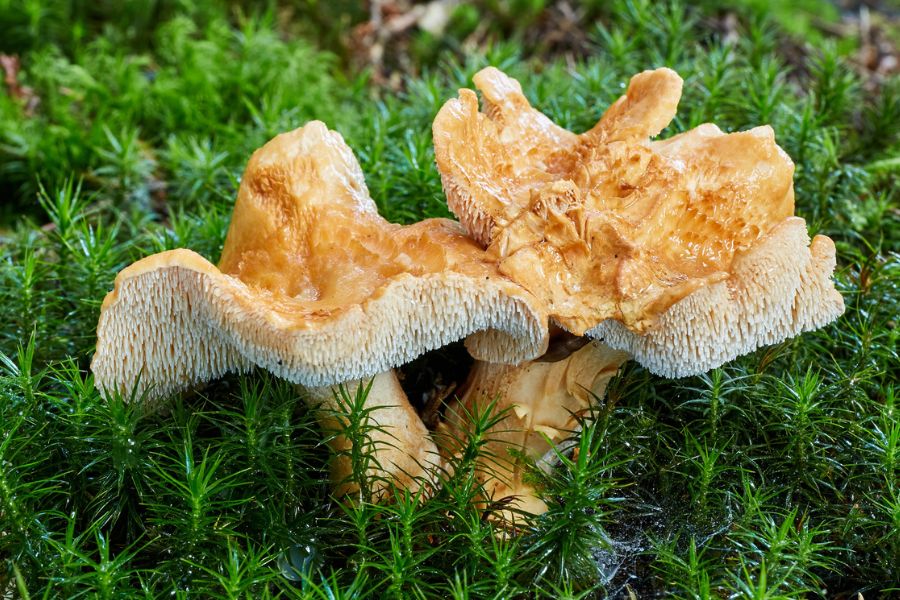Before I foraged for mushrooms, I was a chef. We would spend insane amounts of money on wild mushrooms just like the ones we are about to teach you how to find for FREE! In the early 2000s, morel mushrooms were about $50 a pound!
It’s fun to forage and eat the popular varieties like chanterelles and oyster mushrooms but finding something like a bunch of chicken of the woods mushrooms is equally as exciting and tasty.
We always have to be careful about foraging but with mushrooms, this is even more important. Here are some tips to ensure that you have the right mushroom.
- Use lots of color pictures
- Search for mushrooms by season
- Learn to ID trees as certain mushrooms only grow on or around certain trees
- Learn the easy-to-ID traits of your mushrooms (for example, lion’s mane has long dangly spines)
- Study gills and pores
- If you are unsure about what a particular mushroom is, then just don’t mess with it!
A Quick Reminder
Before we get into the specifics about where and how to find these plants and mushrooms, we want to be clear that before ingesting any wild plant or mushroom, it should be identified with 100% certainty as edible by someone qualified and experienced in mushroom and plant identification, such as a professional mycologist or an expert forager. Misidentification can lead to serious illness or death.
All plants and mushrooms have the potential to cause severe adverse reactions in certain individuals, even death. If you are consuming wild foragables, it is crucial to cook them thoroughly and properly and only eat a small portion to test for personal tolerance. Some people may have allergies or sensitivities to specific mushrooms and plants, even if they are considered safe for others.
The information provided in this article is for general informational and educational purposes only. Foraging involves inherent risks.
Chicken of the Woods
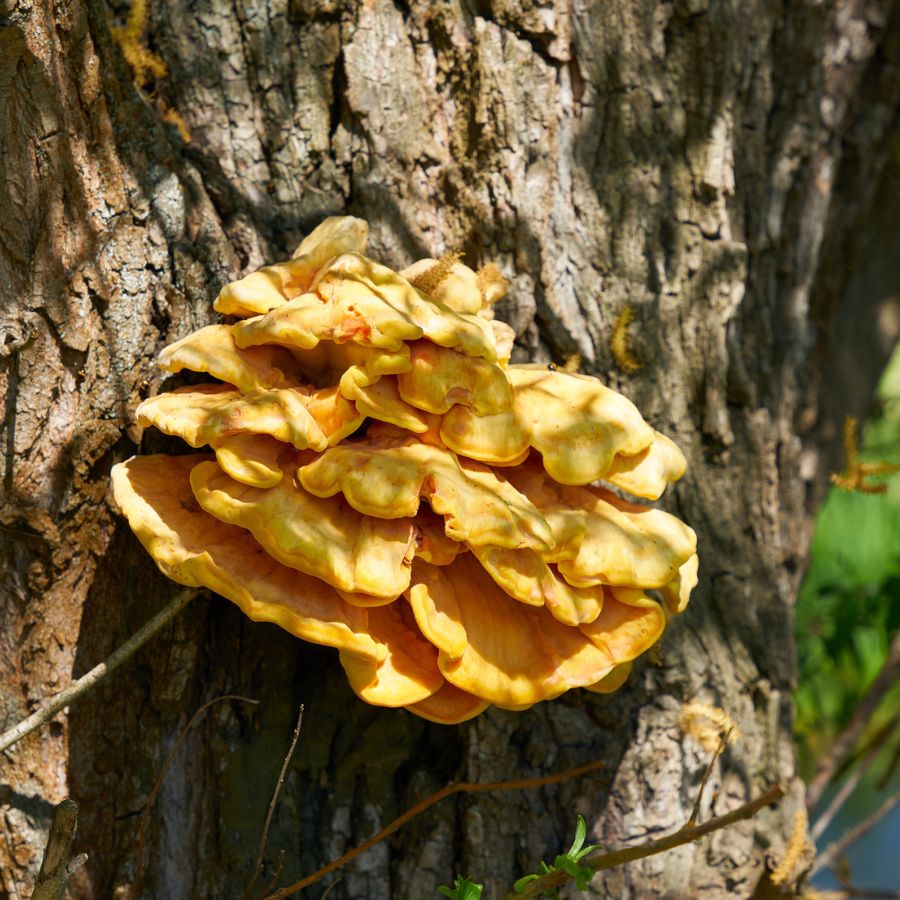
There will always be a special place in my heart for the chicken of the woods mushroom. These orange and yellow polypores were the beginning of my mushroom foraging resume.
While chicken in the woods is the popular name, I discovered this mushroom under a different name: sulphur shelf. To me this actually makes better sense because this stand of mushrooms grow like a shelf, usually off of oak trees.
From a safety perspective, the chicken of the woods is a great mushroom to start with because there is nothing that looks like it. There is no dangerous mushroom of the same color that grows in that distinct way or gets to that size.
Chicken of the woods is a meaty mushroom. It is substantial when sliced and sauteed as a side or topping for a burger.
Puff Ball
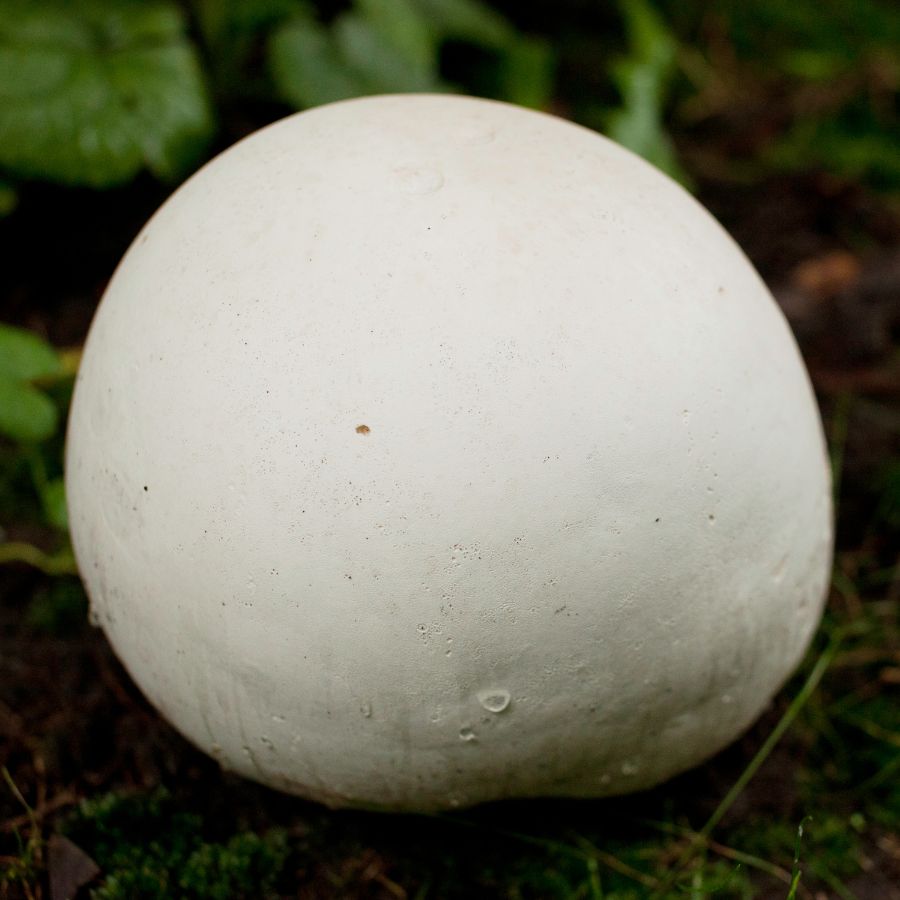
Another great mushroom for the starting forager is the puffball. These always caught my eye, even from the time when I was little. The puffball likes to pop up in fields and grasses. A lot of the time, they are not alone either.
I have seen them in the fallen leaves of the forest floor or even along walking paths. They look like little easter eggs when you find them in the grass though!
The name says it all with these guys. They look like white puff balls. They should be completely smooth and completely white with no stem at all. To be safe you can slice them in half and the inside will be completely white throughout.
Be careful if you see any other colors inside a puffball. Assume that it is not safe if it is anything but pristine and white inside.
Coral

In my first encounter with coral fungus, I didn’t find it, but it actually found me!
Walking the steep hills of my local wooded park, it is pretty common to find fallen hardwood. Protruding up on one of these southwest-facing hills was a strange collection of what can only be described as coral out of water.
The wonderful thing about coral fungus is that it’s nearly unmistakable. You might have to look lower to the ground to find it but once you see it, you cannot unsee it!
They grow up out of decaying hardwoods in the spring and fall months. They are delicate and foraging them can be a delicate process, too. Trim them at the base and get them home carefully.
Coral mushrooms sauteed up in butter are a great treat on top of steak or even in a bowl of quinoa.
Lion’s Mane
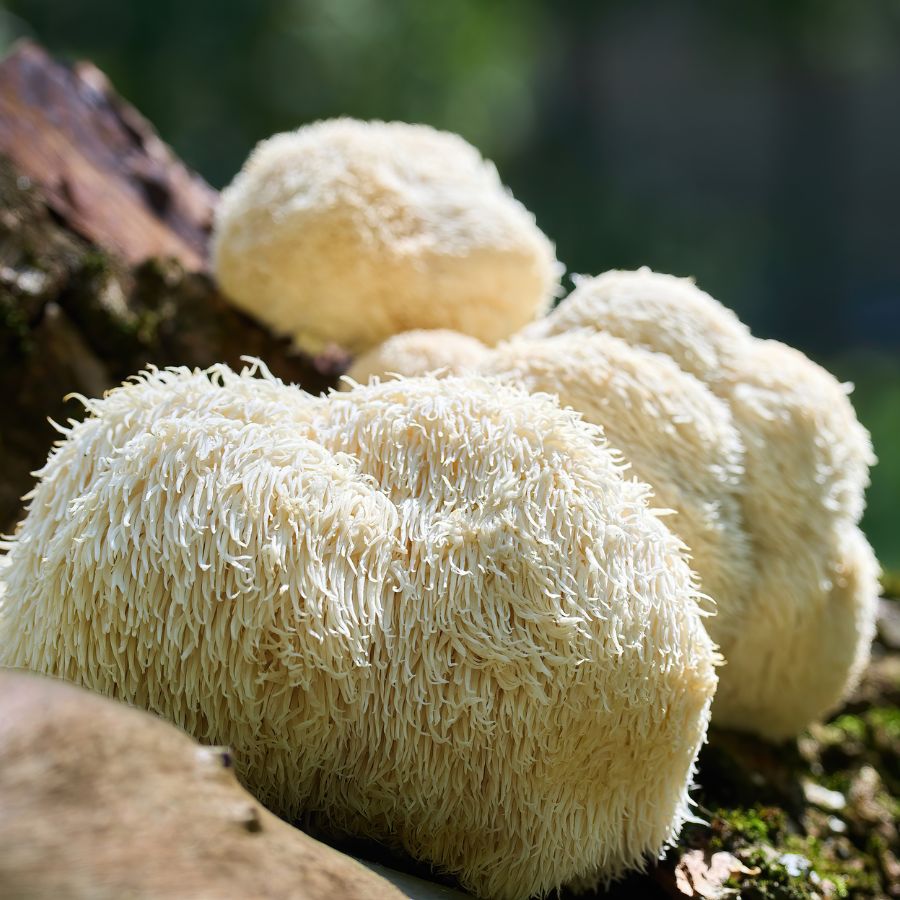
When I started my mushroom foraging journey, I never really heard much about lion’s mane. Or I blew right by it for other more notable mushrooms at the time. However, it has been discovered that lion’s mane is great for brain function.
Now, it has found its way into everything, from meals to coffee! The best thing about it is that it grows on hardwood trees and is pretty easy to find.
Lion’s mane loves to grow where a hardwood tree is wounded. They grow as one large mass and have the “mane” of dangling white spines. Walnut, maple, birch, and oak are all great candidates if you’re looking for lion’s mane.
I have seen lion’s mane as high as 12 feet up, growing on scraped hardwood. Look for that pure white color and dangling spines. These will only grow directly off living or dead trees.
Morels

My first morel hunting adventure was a lesson in kindness on the hillsides of the Appalachian Mountains in Virginia. I connected with the kindest old couple on a morel hunting forum, and they invited me to one of their spots.
It was a cool spring day, and I found myself walking along this slope with them, plucking those little honeycomb-topped wonders out of the ground. There were quite a few black morels and even some white morels.
I was also taught about the Verpa mushroom which grows near morels and looks very similar. Remember that morels are hollow all the way through and are all one piece. However, the Verpa looks similar, but the cap is separate from the stem, and you must look closely.
There are few wild foods in the spring that are as rare or spectacular as the morel mushroom. It’s a culinary delicacy, but it’s also a returning bounty. Look in areas of forest that experience burns and fires, as these are the most common areas where morels grow.
Chanterelle

The chanterelle is another culinary delicacy that chefs and customers pay so much money for. Like the morel, it is almost unbelievable when you are walking about in the woods and looking down to see something that is supposed to be served up alongside sliced lamb on a white-clothed table.
When the days get long, hot, and humid, you can start your search for the chanterelle mushroom. They really like to sprout from the ground near their favorite trees, beech and oak. They start small so you might have to look around the base of these trees.
You might think that these mushrooms have gills, but they just have striations that run into the stem. Gills will only be on the underside of the cap. These false gills are a great way to identify the chanterelle.
If you focus on hunting these, you will find them in those humid months. The color makes them easy to find. That golden color will always stick out in deciduous forests in the summer months.
Be careful of the much larger and bright orange jack-o-lantern mushrooms. They like to grow at the base of dead trees and are often more orange than golden, like chanterelles. Jack-o-lanterns also have true gills that are easily broken off.
Oyster
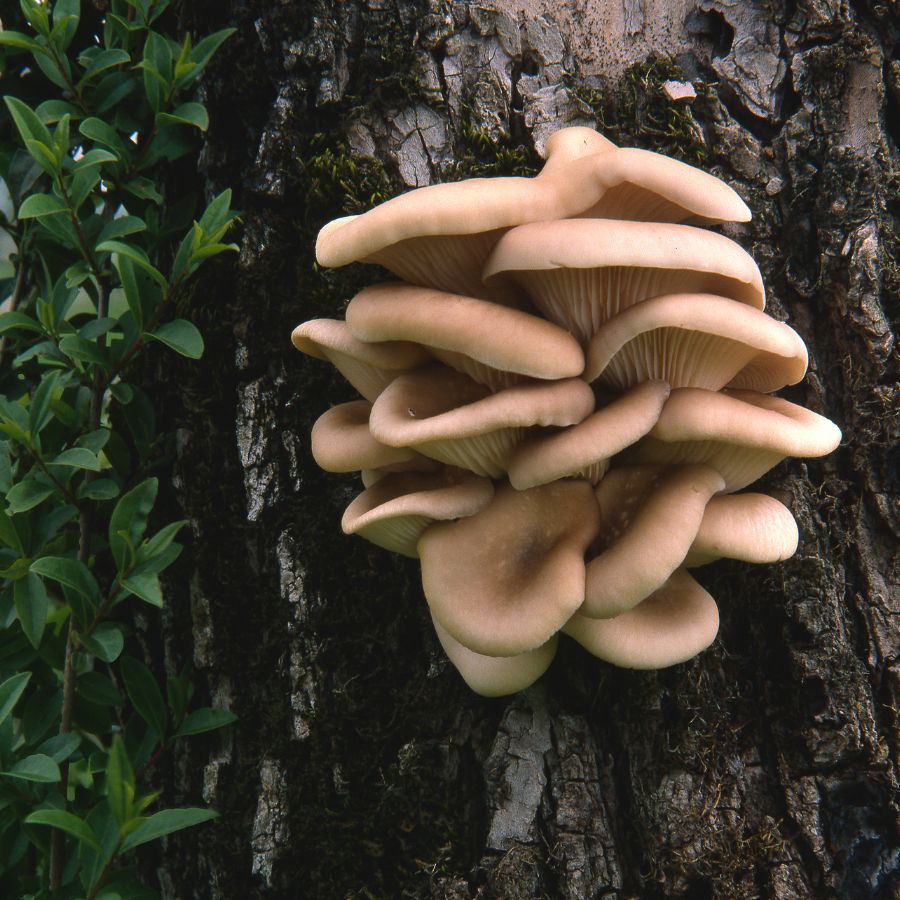
Once I get into the summer months it seems almost inevitable that I will happen upon a fallen oak with oyster mushrooms growing out of it. Oysters are easy to ID in the summer months because there isn’t a ton that looks like them once they mature.
Chances are, you have eaten these and likely even cooked with them. They come in wild mushroom mixes pretty often. They can also be grown pretty easily, too.
Of course, there is nothing like heading out and finding your own in the wild. These grow in that sort of shelfy way. The stem grows out from the tree and then the mushroom grows flat like a little shelf hanging off the trees.
Hardwood trees like hickory, beech, and oak are great places to start your search. As I mentioned I often find them on downed trees in the summer months, so this should give you a good starting point.
There is one other characteristic that might help you ID these mushrooms. There is a faint anise scent to them. If you harvest them and give a sniff you will faintly get that faint black licorice smell.
Black Trumpet

A member of the chanterelle family, the black trumpets are one mushroom I personally have never found in the woods on my own. I am certain I have passed by them in the woods, but their color makes them a little more challenging to find if you are not looking for them exclusively.
The trouble for me is that I am always looking for that golden member of the chanterelle family, and that keeps me from harvesting those black trumpets.
Since they are in the same family, they like many of the same things that chanterelles do. They love beech trees, oaks, and even growing near mossy areas. You might find them one at a time or in groups. It really depends on your area.
Look closely for these and you see the black and dark grey trumpet. The mouth of the trumpet tends to turn down and back towards the ground as it matures.
Turkey Tail
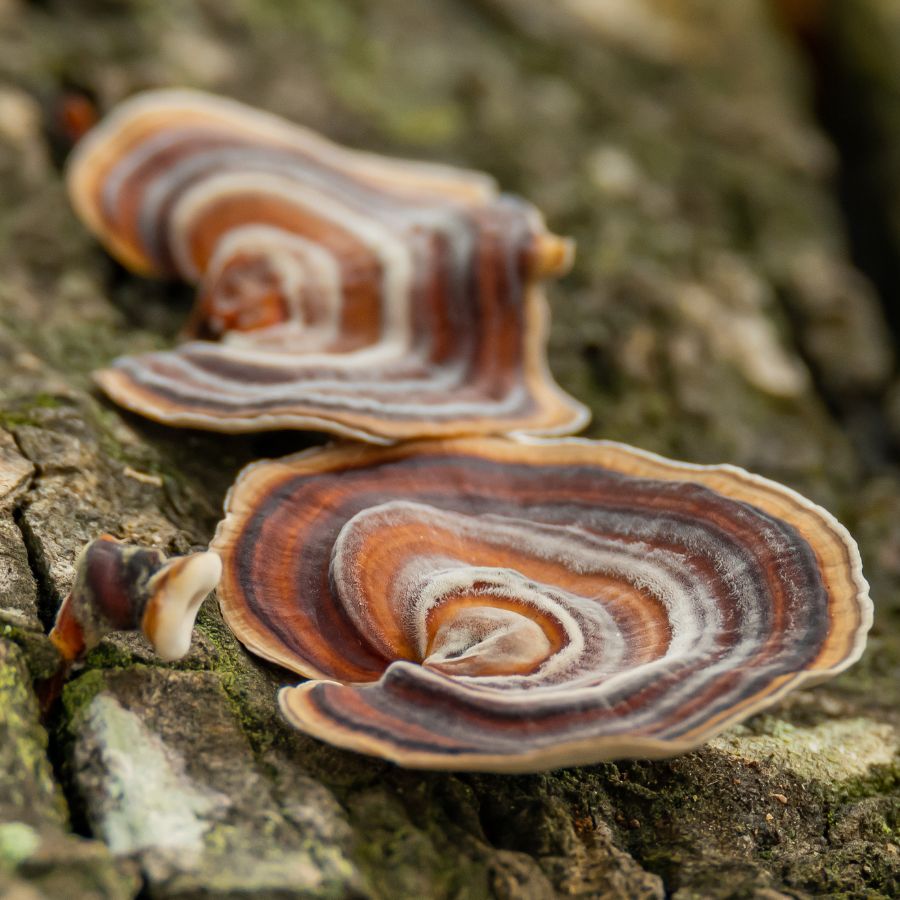
If you have left your home in the past month and taken a walk near the woods, you have probably seen some turkey tails. This stuff is everywhere. If there is dead wood around, chances are there is a turkey tail collection growing off it.
I should mention that these woody mushrooms are far too chewy to eat and are more of a medicinal used in teas and tinctures. These teas and tinctures have been used to treat things like fatigue, UTI, and to boost immunity.
The turkey tail always looked like the ugliest rainbow to me. I would look for a hard mushroom on dead wood that had that sort of white, grey, brown, green, earthy rainbow covering it.
You can also flip over the turkey tail and look at the bottom. Turkey tails will have pores on the bottom, and other similar mushrooms will be smooth without pores.
Hedgehog
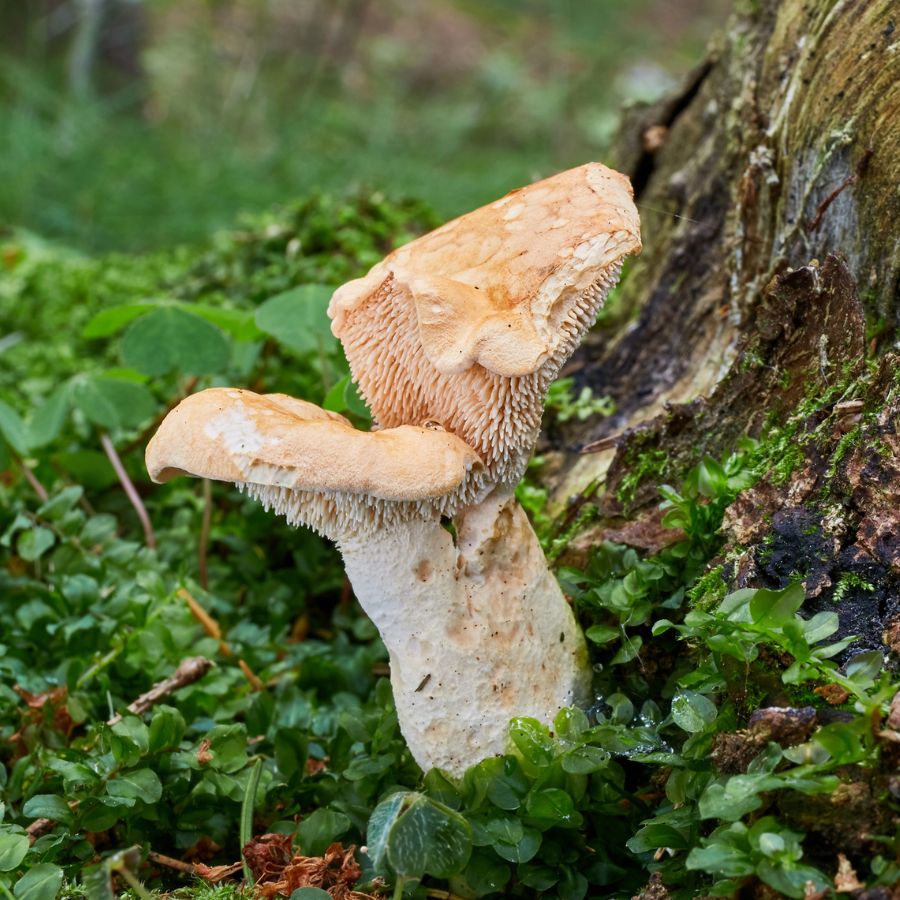
The best time to forage for hedgehog mushrooms is when most people have long since hung up their foraging bags for the year. These are crazy-looking mushrooms with something like teeth or quills that hang from the underside of the cap.
With a pale orange cap that can split and turn upward, you will find these guys near conifers or things like pine and hemlock trees. They are another independent mushroom that likes to grow right out of the soil on its mycelial tract.
You can often find them spread a bit apart but growing along the same line. With those strange teeth on the underside of the cap, you get a mushroom that has no real lookalike. This is another great reason to forage them in the late winter.
One Final Disclaimer
The information provided in this article is for general informational and educational purposes only. Foraging for wild plants and mushrooms involves inherent risks. Some wild plants and mushrooms are toxic and can be easily mistaken for edible varieties.
Before ingesting anything, it should be identified with 100% certainty as edible by someone qualified and experienced in mushroom and plant identification, such as a professional mycologist or an expert forager. Misidentification can lead to serious illness or death.
All mushrooms and plants have the potential to cause severe adverse reactions in certain individuals, even death. If you are consuming foraged items, it is crucial to cook them thoroughly and properly and only eat a small portion to test for personal tolerance. Some people may have allergies or sensitivities to specific mushrooms and plants, even if they are considered safe for others.
Foraged items should always be fully cooked with proper instructions to ensure they are safe to eat. Many wild mushrooms and plants contain toxins and compounds that can be harmful if ingested.

